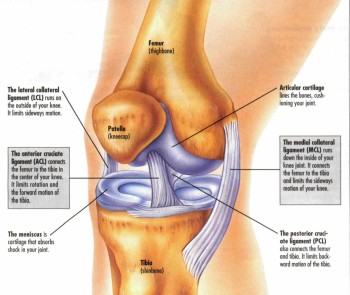When I travel, I add a local paper to my daily reading. Yes, that does mean I read 5 newspapers on those days. (OK. Since the NY Times is one of my daily reads, I don’t generally pick up another local paper when in the New York metropolitan region.)
When I was in the wine county of California, I picked up a local rag. (To be honest, it made the Charlottesville Daily Regress- oops, I meant Progress- look downright respectable.) But, it did have an intriguing article. About a local stem cell clinic.
The Napa Medical Research Foundation, under the auspices of Dr. Marko Bodor, was founded some four years ago (August 2014) ostensibly to support “clinical and scientific research that will develop less costly, less painful treatment for conditions and injuries involving the spine, joints, tendons, and nerves.” You did notice it was a foundation, which means it accepts donations, as well as charges fees to patients.

Besides Dr. Bodor, there’s a researcher- with just a BS degree (Yvette Uribe, UC Berkeley) and a part-time doctoral assistant (Ryan Dregalla, PhD from Colorado State, who also has his own firm, Lucina Biosciences, LLC, which seems to perform contract research in the area).
The Foundation had just provided a stem cell treatment regimen to a local (retired) athlete who tore the ACL (anterior cruciate ligament) in his knee. The therapy was in place of reconstruction surgery that requires months of recovery and rehabilitation.
Moreover, knee replacements have a price tag of almost $ 50K, even though the costs run about 1/5 that value. And, it’s a popular surgery- consuming about 225 out of every 100,000 patient visits to the hospital. So, there’s a big incentive for a cheaper, faster alternative.
The proposed therapy involved bone marrow aspirate concentrate (BMAC) injection into the region. (The patient’s bone marrow, in this case from two hip locations, is employed to collect mesenchymal stem cells and then concentrated prior to reinjection into the body.) Bodor also added platelet rich plasma to further “augment” the healing process.
The article noted that the athlete claimed to be able to do a single-leg squat with his injured knee six weeks after the process. And, within 6 months, an MRI [magnetic resonance imaging] demonstrated that ACL anteromedial bundle (this is one of the two bundles comprising the ACL) was completely regenerated.
The Foundation also effect platelet rich plasma (PRP, also performed on this athlete in the past) injections. This process acquires the patient’s blood, which is then centrifuged to concentrate the platelets that are then injected into the affected area of the body. (Such as the spine for this athlete.) The concept behind PRP is that it can secrete growth factors (and thereby augment healing) and can marshal the local stem cells to differentiate and further augment the healing process.
Bodor alleges that he has completed (or perhaps is still continuing) the PRP process for disc degeneration repair on 245 subjects (589 affected discs all along the spine [cervical, lumbar, and thoracic]). He claims that some 70% manifest “meaningful” improvement. (I use the term claim since “meaningful” is not a scientific, descriptive term.)
There are also claims that the Foundation is guided by an Institutional Review Board (IRB, a board that normally is used to oversee clinical trials), and has some six approved studies underway. One of them may involve torn rotator cuff injuries, who undergo the PRP process.
My problem is that I can’t find NMRF listed in the conventional sites that list stem cell clinical trials, such as The Niche (www.ipscell.com), that I mentioned a year ago. Nor is the Foundation listed on CharityWatch; CharityNavigator doesn’t rate NMRF (it only had $ 363,810 in revenue; the cutoff for its ranking is $ 1 KK- and also has less than $ 350K in assets).
I hope this isn’t one of them.









Not usually great if you can’t find further information about the foundation on the more mainstream conventional sites, but hopefully they’re not skirting the regulatory process.
You are absolutely right, Megan. I am pretty certain, but without sufficient information, I can’t prove it. I hope those that consider using the services of this foundation- or donating to it- will exercise GREAT caution.
I love that you know how to do the research that many of us would not know how to do. I’ve seen (as a layperson) too many 60 Minutes reporting on organizations that ended up doing great harm. And you are right, knee replacements are so common now – I know someone whose mother had one just this week, and she had already had the procedure done on her other knee.
I do the best I can, Alana.
Wait until the queue releases my review of that “no alcohol is safe” article!